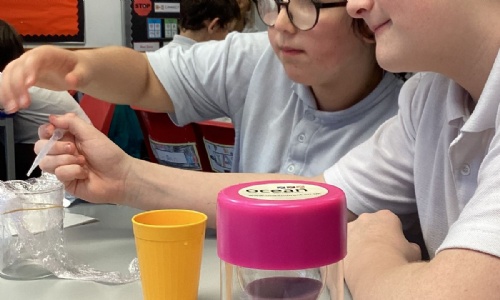Science Experiment - Waterproof Materials

In our recent science lessons, we’ve been learning all about different materials and their properties, like how strong or flexible they are. Recently, we focused on waterproof materials and carried out a fun experiment to find out which one would be the best for making an umbrella. The students loved getting involved in this hands-on activity!
In our recent science lessons, we’ve been learning all about different materials and their properties, like how strong or flexible they are. Recently, we focused on waterproof materials and carried out a fun experiment to find out which one would be the best for making an umbrella. The learners loved getting involved in this hands-on activity!
We tested four materials: tin foil, nylon, cling film, and felt. To keep things fair, we used a beaker to measure how much water got through each material, a pipette to drip water on them like rain, and a timer to make sure each material was tested for the same amount of time.
First, everyone made predictions about which material would be the best at keeping water out. Then, we got to work testing each one. We placed a piece of each material over a beaker, used the pipette to drip water on it, and watched to see if any drips made it through.
After timing each test and measuring the water that ended up in the beaker, we compared the results. Nylon turned out to be the best at keeping the water out, while felt soaked up the most. Tin foil did well too, but it wouldn’t make a very flexible umbrella. Cling film kept some water out, but it wasn’t as effective as nylon.
Overall, this experiment was a great way to learn about materials and how they’re used in real life—like why certain materials make better umbrellas! The learners had a blast, and it was a fun way to explore science together.
Check out the gallery to see some pictures!
